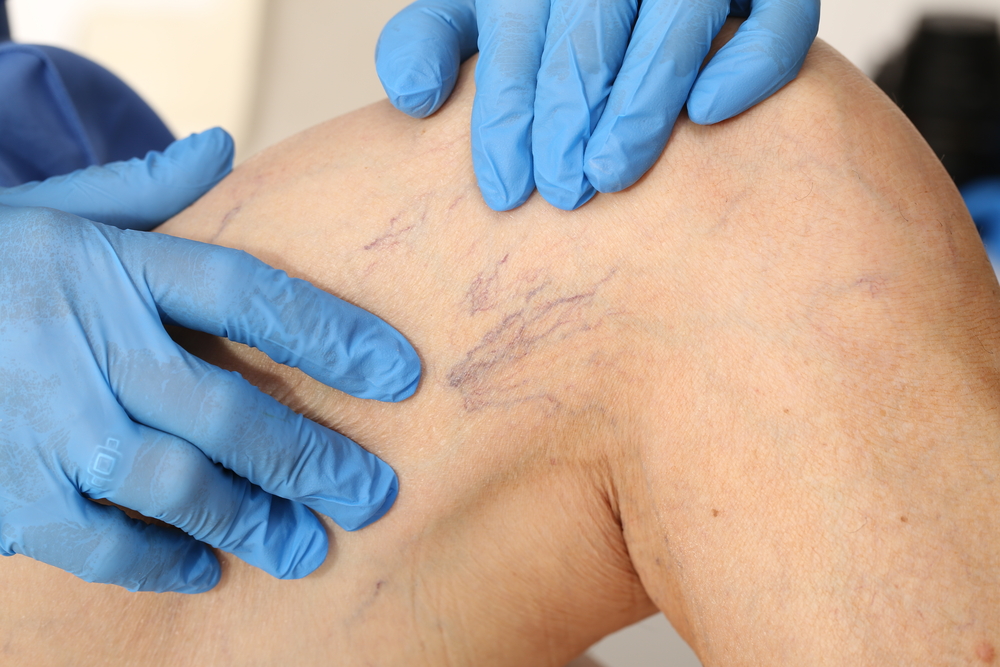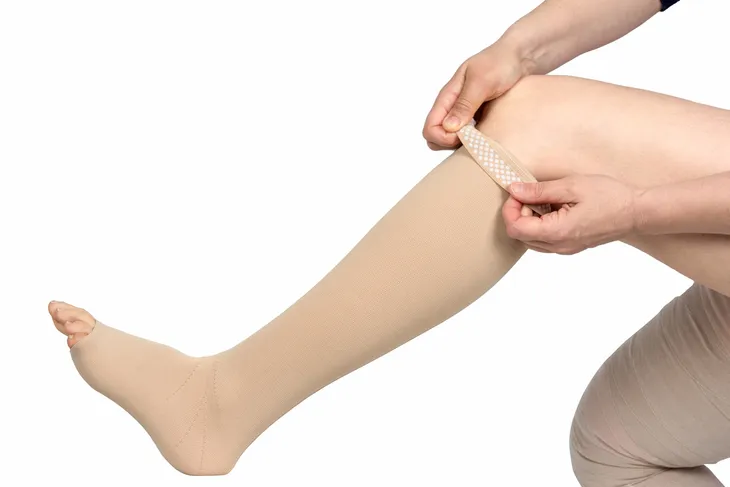Spider veins, also known as telangiectasia, are red and blue veins that are visible directly below the skin and resemble the shape of a spider web or a tree branch. They’re not to be mistaken with varicose veins. Although they share similar traits, spider veins lack the thick, knobby, and twisted appearance of varicose veins. People most commonly notice spider veins on the back of their legs or their face, making it a condition people are in a hurry to fix. In order to prevent and manage spider veins, it’s important that you understand how this condition arises in the first place.
What Causes Spider Veins?
Veins place an important role in the human body. They direct blood back to the heart to be recirculated again. These veins are equipped with one-way valves which help the blood move back up to the heart.
So, what causes spider veins? When the valves are dysfunctional, spider veins can develop. They occur due to blood pooling in the vein near the surface of the skin. Common causes include trauma, fluctuations in hormone levels, obesity, and they can be hereditary, says the Vein Clinics of America.
Risk Factors
While anyone can get spider veins, certain factors can increase your risk. Firstly, women seem to be more affected than men. Your age and family history can also play a large role. In fact, “up to 90 percent of people with spider veins have a family history of them,” says Medical News Today.
Your overall body weight and physical activity levels can also play a role. For example, if you sit or stand for long periods of time, you may be more at risk for spider veins. Now that we have an understanding of what causes spider veins and what factors increase your risk of getting them, next we’ll get into how you can prevent and manage them.
Preventing Spider Veins
Maintain a Healthy Body Weight
One of the first things you can do to prevent spider veins is to maintain a healthy body weight. Keeping your body weight in a healthy range will place less pressure on your veins when they’re pumping the blood back up to the heart.
Further, too much subcutaneous fat (visible body fat) places a large amount of pressure on these veins. This can increase the chances of the valves faulting and resulting in spider veins.
Wear Compression Stockings
If you recognize that you have a family history of spider veins, you might consider acting early and investing in a good pair of compression stockings. You can purchase over-the-counter compression stockings, or if your doctor prescribes them, they may be covered by your health insurance.
Compression stockings work by providing a gentle pressure with the greatest pressure at the ankle and it decreases up the calf. This pressure assistance aids blood flow up the leg to return to the heart. Essentially, you are helping to ease the burden of the one-way valves inside your veins.
Increase the Amount of Exercise You Participate In
Exercising daily is good for every part of a healthy lifestyle. It’s also important for maintaining a healthy body weight and for your blood vessel health. Considering spider veins are the result of deficient valves within your blood vessels, this makes exercising very important.
When you exercise, you are pumping more blood throughout the body, ensuring that your veins and the valves inside them are working properly. All it takes is going outside for a brisk walk or hitting the gym for a weight session.
Decrease the Amount of Sitting Time
Modern-day life has resulted in a lot of sitting. We either sit at our desk working all day, head home and sit while we eat dinner, and then move to the couch to watch our favorite tv shows before heading to bed. Leading a sedentary lifestyle is not only bad for your overall health but can also increase your risk of spider veins.
All this sitting causes blood to pool in our legs, placing even more pressure on the veins to pump it back up to the heart. You can fix this by riding a bike to work, taking the stairs instead of the elevator, and taking small breaks during the day to stand up and walk around the office.
Managing Spider Veins
Sclerotherapy
If you have spider veins already, there are a few things you can do to help manage them, starting with sclerotherapy. Sclerotherapy involves injecting your spider veins with a solution that causes the vein’s walls to come together, preventing blood from entering them.
Over time, this procedure causes the appearance of spider veins to disappear and even causes the veins themselves to shrink.
Surgery
If you have many spider veins on your body, your doctor might recommend surgical intervention. This is where the surgeon will either remove the spider vein itself or they will tie off the veins, which prevents blood flow into the veins and allows the appearance to fade away.
Your doctor will factor in many things when considering surgery. Typically, the spider veins will have to be large and in multiple locations.
Laser treatment
If you think surgery might be too over the top, laser treatment is an excellent alternative. Essentially, a medical-grade laser is used to target the spider veins directly underneath the skin.
The wavelength from the laser is absorbed by the skin and goes directly into the spider veins, causing its walls to close together. The closing of the vein walls prevents blood flow into the veins and decreases their “spider web” like appearance over time.
Compression Socks and Stockings
Yes, this strategy was already mentioned in the prevention section above, however, if you already have spider veins present in your legs, you can help manage this condition with compression stockings or compression socks.
Compression stockings are a great idea, especially if you’re in the process of receiving laser treatment or sclerotherapy to decrease the size and appearance of your spider veins. This strategy is a great combination approach used with any of the treatments mentioned above.













